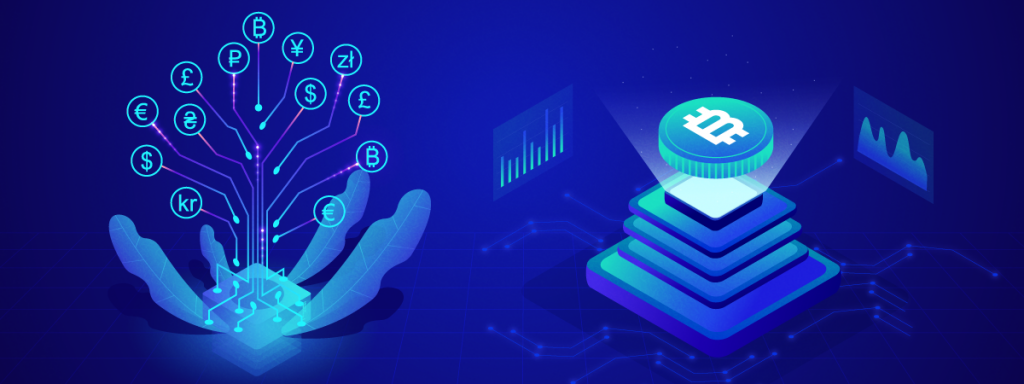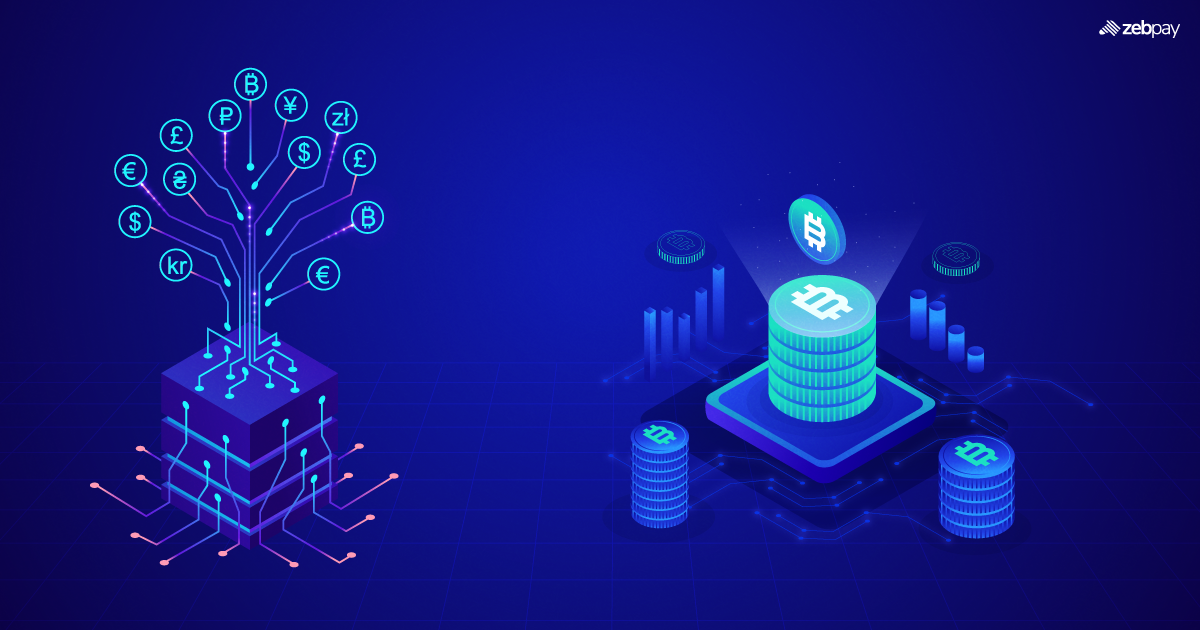With each innovation comes new ways for individuals to make money. The same is also true with the current rapid growth in crypto. From day trading to mining, we hear stories of people making millions in just a short amount of time. But other forms of crypto investing are gaining traction among users, like yield farming and staking. So what are they and how are they different?
Yield Farming
Definition Yield Farming in crypto
Yield Farming is one popular method of passively generating crypto tokens as income. It involves depositing your crypto assets on a platform that lends them out to other liquidity providers and exchanges. This can allow you to earn both interest and a portion of the transaction fees.
How does Yield Farming Work?
Decentralised exchanges typically operate using Automated Market Makers (AMMs). These are programs that allow users to trade with a pool of funds rather than a counterparty. To ensure there are enough tokens for smooth trades, DEXs draw from liquidity pools.
Yield farming involves lending your crypto funds to DeFi lending platforms, which further use them in liquidity pools. In return, you receive interest that helps you grow your crypto holdings.
Risks and Rewards
Yield farming puts your idle crypto funds to good use and allows you to earn with little to no effort. The returns can also be very lucrative, especially if you start early in the project cycle.
However, one of the main concerns in yield farming is the volatility of crypto prices. This volatility can lead to temporary losses in your funds, which become permanent when you decide to withdraw them.
Staking
Definition Staking in crypto
Staking is a consensus mechanism that allows the users of a blockchain to participate in its validation process. When you lock in your crypto on the platform, it acts as your “stake” on the network. This stake enables you to verify whether transactions are genuine or fraudulent. Successful validation rewards you in crypto known as “block rewards”.
How does Staking Work?
Centralised platforms have their proprietary methods of verifying transactions. This is not possible on a blockchain, where there is no central authority for validation. Instead, the platform’s users must assist in securing the network.
In proof of stake blockchains, this is done through staking. Staking acts as collateral against which you can participate in validation. You can earn rewards if you successfully validate a block of transactions and add it to the blockchain. However, acting maliciously or validating fraudulent transactions will lead to you losing a portion of your stake.
Learn About What Is Proof Of Stake
Risks and Rewards
Staking allows you to earn while also supporting a network you use. Stakers are crucial to a blockchain’s seamless operation and longevity, so supporting a platform through staking also secures its future.
The main risks that plague staking are network outages, validator risks and project failures. If the network is unstable, your earnings may also be variable. If you choose the wrong validator node to stake with, it can result in a fall in your staked amount. Finally, do your research before choosing a project to stake with.
Learn More About What Is Staking In Depth
Differences Between Yield Farming and Staking
| Feature | Yield Farming | Staking |
| Types of Assets | All crypto tokens | Specific token |
| Earnings Potential | High | Medium to low |
| Complexity and Effort Required | May be complicated | Simple to get started |
| Risk Profile | High-risk | Low-risk |
| Type of Investor | Seasoned investor | Beginner investor |
Types of Assets
Under yield farming, you can lend virtually any asset there is a demand for. This can all be done through a single platform like Aave or Compound, which makes the process easier to manage.
However, staking requires you to use the native token of the network itself. For example, if you are staking on the BNB smart chain, you have to use the BNB token. You cannot use Ethereum or Bitcoin for the same.
Earnings Potential
Early in the life of a crypto project, there may be very few lenders of the token. Being one of the first can grant you very high returns, with some cryptos offering over 70% per annum in yields.
Staking is a more stable investment, where your returns are determined mostly by the price of the token and the amount distributed as block rewards. The returns are also lower, with some blockchains offering around 10% per annum.
Complexity and Effort Required
Yield farming is not a very simple process. It requires an understanding of the DeFi lending space as a whole, along with the expected returns on any given asset. Optimal farming may even involve swapping between multiple tokens to arrive at the asset with the highest returns.
Staking is simple. All you have to choose is the platform to secure. Next, you pick a validator and stake the required number of tokens to start earning. This process is only complex if you decide to run a validator node yourself, which is prohibitively expensive for most investors.
Risk Profile
As mentioned above, yield farming faces more risks than staking, given the higher potential for returns. Yield farming faces volatility risks along with coin failures, while staking suffers to a much lesser extent.
Suitability for Different Types of Investors
If you are a veteran investor in the crypto space who is very comfortable with DeFi lending practices, yield farming may be the choice for you. If you are instead a beginner investor or like to be risk-averse, staking is a better fit.
Which is Better in Long and Short Term?

Each form of investment offers its own advantages. Staking can start generating returns immediately with each block that is validated. On platforms like Ethereum, a block reward is distributed every 12 seconds. The returns from this are steady but low in the long run.
Yield farming does not require you to lock your tokens in. if you wish for a highly liquid investment option, farming allows you to switch between various platforms to earn the highest possible returns with your funds.
In the end, yield farming may be the better long-term investment as it allows you to reinvest and jump between platforms with high interest. This leads to much higher potential returns in the long run, with higher risk to go along with it.
Read more: 8 Ways to Earn Passive Income Through crypto
Conclusion
Is yield farming better than staking? Both yield farming and staking have led to better outcomes for crypto investors. Yield farming in particular is a highly lucrative option, but only if you accept the risks that come along with it. Staking is on the other side, where you can earn a steady stream of income with a relatively low risk of losses. In the end, the choice depends on your experience and your preferences as an investor.
You can keep yourself up to date with the latest crypto news on ZebPay blogs.
FAQs on Yield Farming VS Staking
Is Yield Farming Safe?
Yield farming can be safe if you choose to lend on low-risk projects. However, maximum returns are derived from much riskier investments, which have the chance to fail and make you lose your investment. Do your research and weigh the pros and cons of each project to find the best option for you.
Is Staking Crypto Safe?
Staking is a safe way to make steady returns through a platform you support. If you choose well-established blockchains to stake on, the chances of failure are very low. But the expected returns of staking also reflect this low risk.

